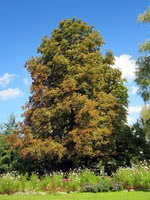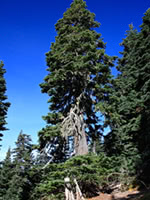Mon-Fri 9am - 5pm Mountain time
Horse Chestnut vs Western Red Cedar
Aesculus hippocastanum
Thuja plicata
CUSTOM GROW
NOT AVAILABLE THIS SEASON - MIGHT RETURN
Horse Chestnut is a medium sized deciduous tree that is native to Greece but has been grown in North America for hundreds of years. It produces large nuts.
A top CO2 absorbing species. Experts think this tree may help climate change more than others.
Western Red Cedar is native to the Pacific Northwest, and is the largest tree in the cypress family. Featuring horizontal branching with scale-like dark green foliage that has a strong aroma. The wood is naturally durable and light, and is resistant to decay and insects, making it sought after for house siding, paneling, furniture, and fences. This is British Columbia's official tree.
Horse Chestnut Quick Facts
Western Red Cedar Quick Facts
Toxicity: most parts of plant are toxic

